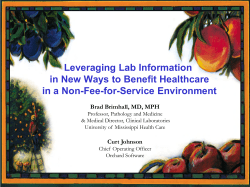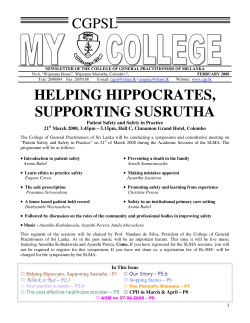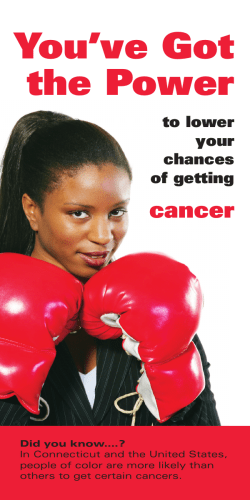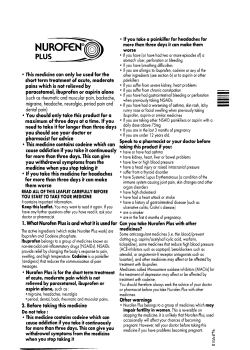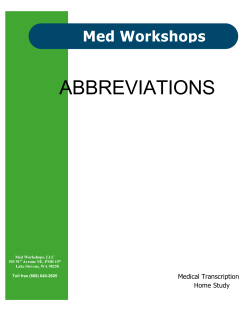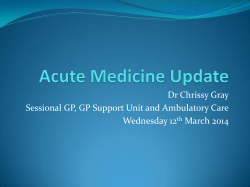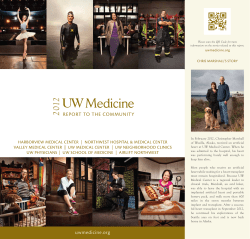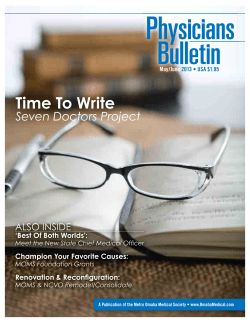
* Physicians' Learning Strategies
Physicians' Learning Strategies* H. B. Slotnick Chest 2000;118;18S-23S DOI 10.1378/chest.118.2_suppl.18S The online version of this article, along with updated information and services can be found online on the World Wide Web at: http://www.chestjournal.org/content/118/2_suppl/18S.full.html CHEST is the official journal of the American College of Chest Physicians. It has been published monthly since 1935. Copyright 2007 by the American College of Chest Physicians, 3300 Dundee Road, Northbrook IL 60062. All rights reserved. No part of this article or PDF may be reproduced or distributed without the prior written permission of the copyright holder. (http://www.chestjournal.org/site/misc/reprints.xhtml) ISSN:0012-3692 Downloaded from www.chestjournal.org on April 20, 2009 Copyright © 2000 American College of Chest Physicians Physicians’ Learning Strategies* H. B. Slotnick, PhD, PhD This article examines the two categories of learning strategies that physicians use in clinical practice. The strategies are similar in their overall architectures and differ (1) according to nature of the clinical problem that precipitated the need to learn, and (2) the ways in which learning resources are used. (CHEST 2000; 118:18S–23S) Key words: adult learning; learning theory; physician learning Physicians’ Learning Episodes describing physicians’ learning sugT hegests,literature first, that doctors learn in response to either specific problems (eg, problems posed by particular patients) or general problems (eg, updates on bodies of skill and knowledge),1–3 and second, that each problem type is associated with a particular form of physician learning. These forms are (1) semi-structured learning (eg, available reading and consultation sources) that are used to resolve specific problems, and (2) formal learning (eg, planned learning projects, courses at specialty society meetings) that are used to address general problems.4 Third and finally, learning the solutions to specific problems results in incremental additions to a doctor’s knowledge and skill, while learning associated with general problems produces changes to larger “elements” of the doctor’s life and practice.5 There is also a set of patterns called learning episodes that describes the stages doctors move through in going from the specific and general problems that precipitate learning to learning outcomes. These stages have been described by Fox and his colleagues,6,7 as follows: (1) doctors deciding whether to take on a learning task; (2) learning the skill and knowledge anticipated to resolve the problem; and (3) gaining experience using what was learned in a variety of settings. This formulation has recently been expanded to make it more congruent with doctors’ clinical learning activities.8 The first change was the addition of a *From the Department of Neuroscience, School of Medicine & Health Sciences, University of North Dakota, Grand Forks, ND. Correspondence to: H. B. Slotnick, PhD, PhD Department of Neuroscience, School of Medicine & Health Sciences, 501 N Columbia Rd, Grand Forks, ND 58203; e-mail: slotnick@ medicine.nodak.edu fourth stage (scanning), in which doctors examine their environments both for problems that might precipitate learning and for ideas, proposals, etc., that may be useful to them in the future, although they have no immediate need for them. The second change concerns the manner in which the remaining three stages are manifest as a function of the type of the precipitating problem. In particular, specific problems progress rapidly and make use of immediately available learning resources, while learning associated with general problems is more deliberative and uses immediately available resources as well as those requiring more effort before they could be accessed (eg, courses at specialty society meetings). The issue of which resources are used as a function of problem type and stage will be considered later in this article. The third change is the addition of clear, although unstated, criteria used to describe whether learning should continue on to the next stage or should terminate (which means the physician returns to the scanning stage). The four stages are presented as a function of problem type in Table 1. Differences among the stages can be understood in terms of the goal of each stage; the discrepancy resolved during the stage (ie, what is needed to address the goal); the way learning resources are used; the reflection (ie, the thinking) the doctor does during the stage; and the criteria to be satisfied before the stage can be considered complete. The criteria are of particular interest because they bear on whether a doctor’s aborting a given learning episode before completion of the last stage is justified or unjustified. The stages are compared and contrasted in terms of these attributes in Table 2. One final point needs to be made about the stages, and it concerns the criteria for the completion of each stage. Although medicine is certainly a profes- 18S Translating Guidelines Into Practice Downloaded from www.chestjournal.org on April 20, 2009 Copyright © 2000 American College of Chest Physicians Table 1—The Four-Stage Theory of Physician’s Self-Directed Learning Episodes* Learning Stage/Problem Type Specific (eg, Addressing a Patient Need) General (eg, Updating Bodies of Skill and Knowledge) Stage 0/Scanning for problems and other interesting things. The doctor is alert for potential resources. The doctor is also alert for problems that he might need to solve and, when potential problems are encountered, he moves on to the next stage . Stage 1/Evaluating the problem: deciding whether the potential problem encountered is worth pursuing. The doctor senses a need for immediate action and decides on the spot whether to take on the problem; alternatively, the doctor reads a bit, talks with others, and decides quickly. The doctor feels uneasy (“Maybe I should review that stuff . . . ”) and asks: Is this really a problem? Is there likely a solution to the problem? Are resources available so I can do the required learning? Am I prepared to make the changes in my practice required by the learning I do? Stage 2/Learning skills and knowledge: Learning what is needed to address the problem. Learning involves reading (typically journals, less often texts) and talking with others who offer suggestions. Learning involves comprehensive reading and taking available and appropriate courses. Stage 3/Gaining experience using what has been learned. Learning means trying the problem solutions on the problem in question and seeing what happens. Learning means trying the new skills and knowledge in a range of settings and gaining experience as a result. It also means reading again, although now the purpose is not to learn the new thing but to see what kinds of experiences others have had with it. *Reprinted with permission from Slotnick.8 sion, and so has its own proprietary body of technical (indeed, scientific) skills and knowledge,9 science does not figure prominently in doctors’ deciding they know enough to end one stage and begin the next one. This is both understandable (physicians lack the time to remain current on all the scientific developments in their areas of practice expertise) and troubling (absent attention to scientific developments; how can a doctor understand the impacts her actions have on her patients?). Resolution to this dilemma appears in the criteria doctors use to end each stage; in each case, doctors adopt approaches that are practical vs theoretical. Thus, a doctor may abort a learning episode at stage 1 (evaluating the problem) because he does not think a solution exists (see Gorman et al10), or proceed from stage 2 (learning the skills and knowledge) to stage 3 (gaining experience) without exhausting the research literature because a consultant and an article read both provided the same solution to the precipitating problem.8 In both cases, time is saved that can then be used for other purposes, and scientific rigor is assumed rather than confirmed. See Slotnick8 for a more complete discussion of the criteria used to end learning stages. Summarizing to this point, the existing literature on how doctors learn makes three claims: 1. Physicians’ self-directed learning activities vary with both the nature of the problem precipitating the learning episode and the stage the doctor is at in resolving the problem. 2. Stages in self-directed learning episodes are distinguished from one another in terms of their goals, discrepancies, learning resources, reflection, and criteria for completion. 3. Self-directed learning episodes can terminate for reasons that may or may not be justified. The doctor then returns to the scanning stage. Left unresolved is the question of where doctors turn for skills and knowledge they need to complete each stage, the question considered in the next part of this article. Learning Resource Use The same study that expanded the description of physicians’ learning episodes also indicated that the resources doctors use to address specific problems (eg, those presented by particular patients) are those that are immediately available to them8 (also see McClaran et al3 and Slotnick et al,1,2). These include the journals that doctors subscribe to; reference materials available in the office, such as the Physicians’ Desk Reference; and physicians doctors talk with regularly (eg, partners, regularly used consultants). Indeed, these sources are those identified in meta-analyses of doctors’ resources as having certain attributes11,12: accessibility (ie, resources are easily locatable, information needed can be quickly found within the resource, and the information is readily understood); applicability (ie, the information and skill located is clearly related to the clinical problem CHEST / 118 / 2 / AUGUST, 2000 SUPPLEMENT Downloaded from www.chestjournal.org on April 20, 2009 Copyright © 2000 American College of Chest Physicians 19S Table 2—Attributes of Learning-Episode Stages* Stages Attribute Goal Discrepancy Learning resources Reflection 0 1 2 3 Identify potential problems to consider during next stage, and note potentially useful issues. Doctor needs problems whose solutions will satisfy Maslowian needs.3 All aspects of practice and daily life. Decide whether the doctor should learn what is necessary to resolve the precipitating problem. Learn the knowledge and skill necessary to begin resolving the precipitating problem. Apply and become comfortable with what has been learned in resolving the precipitating problem. The doctor lacks sufficient information to decide whether to pursue the problem’s solution. Specific problem: the clinical situation, reading, discussion with other doctors. General problem: reading, conversations, information at meetings. Specific problem: focus on patient, available reading and consultation; context varies from clinical and immediate to consultative and deliberate; purpose is to address the questions under discrepancy. General problem: focus on information on skills and knowledge to be learned; context is consultative, deliberative, and occurs anywhere; purpose is to answer discrepancy questions above. The doctor lacks the skills and knowledge necessary to begin resolving the precipitating problem. For specific problems, primary sources are reading and consultation. For general problems, they are reading, consultation, and courses. Specific problem: focus is knowledge and skill needed to resolve the problem; context is typically clinical and immediate; purpose is to learn procedures for addressing the problem. General problem: focus is reading, and context is deliberative and/or handson; purpose is to gain sufficient knowledge and skill to begin using the new learnings in resolving the precipitating problem. Situation-specific indications: the problem requires action, resources were exhausted, others (eg, instructors) told the physician it was time, there was nothing more to study. Doctor-specific indications: an acceptable plan existed, the doctor felt ready, the doctor was clear on what was to happen next, or the doctor felt there was no value in additional learning. The doctor lacks experience and/or confidence in what he is doing. Focus on probable fit with doctor’s life generally, practice in particular. Relationship of problems, information, and issues to practice is a central feature. Criteria for Problem, issue, or completion information seems interesting or important enough to be considered further. Answers realized to the following questions: Is there really a problem? Is there likely a solution to the problem? Are resources available for the physician to do learn what is required to solve the problem? Is it practical for the doctor to do the learning? Primary sources are those used already and experience using the skills and knowledge learned. Doctors also seek others’ experiences in similar situations. Postmortems of what happened occurred in both specific problem and general problems. The focus was on the doctor’s experience as well as prior knowledge and experiences, the context is deliberative and may or may not be at the site of the action, and the purpose(s) to evaluate and gain experience. The experiences of others (both personal and published) is reflected upon as well. All criteria were situation specific in the sense that the doctor gained enough experience to be confident with the new learnings. This was evidenced by the doctor’s no longer consciously considering his or her actions, or the doctor’s attention shifting to other issues. The stage could also end because the precipitating problem resolved and the doctor lacked further interest. *Reprinted with permission from Slotnick.8 at hand); and familiarity (ie, the doctor has used the learning resource regularly in the past). Left unresolved is the question of which resources doctors use to find the skills and knowledge needed to address general problems. Answers to this question arise from the preliminary findings of study of physicians’ learning resource use.13 A random sample of North Dakota physicians were asked to indicate which resources among a list of 43 a physician would use to find solutions to a general problem (ie, updating) with problems arrayed along two dimensions: (1) stages of learning episodes (note that scanning was not included since it is done “intuitively” and so considers all resources a doctor might encounter); and (2) the nature of the general problem precipitating learning (ie, updating on a commonly seen disease, updating on a commonly used diagnostic approach, updating on a commonly used therapeutic approach, and updating on a commonly used therapeutic technique). Thus, the study was 20S Translating Guidelines Into Practice Downloaded from www.chestjournal.org on April 20, 2009 Copyright © 2000 American College of Chest Physicians able to address questions including the following: Which resources are commonly used in addressing a variety of general problems? Is there a difference in the number of resources used moving from one episode stage to the next? Is there a difference in the number of resources used for addressing different varieties of general problems? Preliminary findings from the study suggest that the resources doctors use to address general problems are the same as those used for specific problems (ie, talking with same specialty colleagues, and reading journals available in the doctors’ offices), augmented by some that are not immediately available and so are not used in solving specific patientcare problems (ie, attending specialty society meetings, talking with doctors at such meetings, and journals available at the medical library as opposed to those in the doctors’ offices). These findings make sense; the lack of immediacy associated with general problems means that doctors can use resources that require planning before they can be accessed. Preliminary findings also suggest that the number of resources used varies with the general problem varieties and stage, although the statistical interaction observed to exist between these two factors complicates interpretation of findings. Examination of the interaction suggests the following: 1. Regardless of problem variety, the smallest number of learning resources are at the gain experience stage. Smaller numbers of resources are likely needed, since this is a largely experiential activity; while it is true that physicians value sharing experiences with other doctors, it is also true that a doctor needs to gain and reflect on experience if he or she is to internalize it. This is true across all problem varieties. 2. More learning resources are used at stage 1 (evaluating the problem to decide whether to learn to solve it) and stage 2 (learning the skills and knowledge) for a disease update than updating on a therapy or a diagnosis. The problem varieties vary across both stages (evaluating the problem, and learning the skills and knowledge) in terms of the numbers of resources used. It is likely that more resources are needed for updating on disease than on diagnosis or therapy because information on disease tends to be developed in and to be available from research centers, while information on diagnosis and treatment is more likely locally available. 3. While the number of learning resources is generally the same for both diagnosis and therapy, there is a small but statistically significant difference between therapeutic approach and therapeutic technique, the difference being that fewer resources are needed to learn the skills and knowledge for the therapeutic technique than for the therapeutic ap- proach. The interaction of therapeutic approach vs therapeutic technique with stages indicates that learning the skills and knowledge associated with the technique requires fewer resources than the approach, probably because one learns how to do something (technique) by doing it, and one learns about an approach by reading and discussing what one reads with others, such as colleagues. In summary, there are differences in the resources accessed in resolving general problems, and the differences are very much a function of both the problem the doctor is learning to solve and the stage the doctor at while learning the solution. The implications of these findings are the subject of the last section of this article. Recommendations Knowledge of the way a process works offers opportunities to both understand it and invoke it in striving toward desirable ends. In the case of medicine, applying this kind of understanding in clinical and public health settings allows interventions that prevent illness and treat it when it appears; in the case of medical education, applying this kind of understanding allows interventions that facilitate clinicians’ practices by allowing doctors to learn skills and knowledge when they encounter the problems that require the skills and knowledge. How these medical education ends are reached is the subject of the balance of this article. It has long been known that adults, generally,14 and physicians, specifically,15 learn in response to problems they perceive they have. It is now clear that simple recognition of a problem, while necessary to ensure learning, is not sufficient in and of itself. First the doctor must evaluate the problem to decide the following: (1) if it is really is a problem he or she should handle; (2) whether the problem likely has a solution; (3) whether the resources needed to resolve the problem are available; and (4) once learning has taken place, whether he or she is prepared to change his or her practice in order to solve the problem that precipitated the learning.8 The recommendation for those who would teach doctors is that they must first provide information allowing learners to decide whether to take on the learning project, since proceeding directly to teaching the skills and knowledge may be entirely premature. An example will show how this works. There is currently concern about the use of pulmonary artery catheters.16 –20 If one wishes to change practitioners’ use of the catheters to resolve these concerns, one must first convince these same practitioners that learning the required skills and knowlCHEST / 118 / 2 / AUGUST, 2000 SUPPLEMENT Downloaded from www.chestjournal.org on April 20, 2009 Copyright © 2000 American College of Chest Physicians 21S Table 3—Action Taken in Moving Through a Learning Episode Action Nature of Justification Move to Next Stage Abort Learning Actions justified Move to next stage for justifiable reasons. Actions not justified Move to next stage for unjustifiable reasons. edge is indeed going to help them solve problems they already recognize they have.19 Recall that the first criterion doctors use in stage 1 (evaluating the problem) is, Is this a problem for me? Therefore, knowledge of the problems potential learners face in their practices and ways they approach them is simply a necessity. Similarly, it appears that doctors likely use the same resources in evaluating the problem and in learning the skills and knowledge required to complete the stage of learning they are at. Since the criteria are different at each stage (see Table 2) while the resources are often the same, it is clear that the ways in which doctors use resources at each stage is different. The recommendation for anyone who would teach practicing clinicians is that the doctors in their audiences are looking for different things from the presentation they are seeing, depending on where they are in the learning process; pointing out the applicability of what one is teaching for those at each point in the learning process helps ensure that the needs of different audience segments will be met. Finally, there is the issue of documenting the outcomes of learning, and this leads to two recommendations. Recognizing that each stage can end in two ways (move on to the next stage vs terminate learning and return to scanning), and that the decision can be either justifiable (the basis for the decision is “valid”) or unjustified, documentation of learning outcomes needs to consider the four possibilities shown in Table 3. Recall that the criteria doctors use for ending each stage in a learning episode are practical vs theoretical. This means that justification of a doctor’s actions can only be made by looking at what the doctor did (eg, how the doctor ended the learning episode), and the doctor’s criteria for making the decision that resulted in the action taken. The first recommendation, then, is that anyone who evaluates educational activities for physicians should note both how each individual doctor (1) moves from one stage to the next or ends the learning activity, and (2) why he of she took the action that was undertaken. The second recommendation relates to documenting clinical change, an outcome of educational activ- Abort learning activities and return to scanning for justifiable reasons. Abort learning activities and return to scanning for justifiable reasons. ities. While it is true that only in stage 3 (gaining experience) can clinical change can be noted, it is also true that physicians often require multiple exposures to educational interventions before they enter stage 3 (see Davis and colleagues,21 on the necessity for multiple educational exposures when the goal is to change clinical behavior). This means that the proper evaluation of clinicians’ learning activities must document the prevalence of movement from one stage to the next (including the prevalence of doctors ending the learning episode after stages 1 and 2), as well as summarizing the evidence that the doctors offered for their actions. Summary and Conclusions Physicians’ learning strategies follow four stages (scanning, evaluating the problem, learning the skills and knowledge, and gaining experience) that vary according to whether the problem that precipitating learning was specific (eg, due to a particular patient) or general (eg, updating or learning a new body of skills and knowledge). Specific problems tend to evolve quickly and make use of learning resources that are accessible, applicable, and familiar to the doctor (eg, journals the doctor subscribes to, and consultants the doctor uses regularly). In contrast, general problems require more deliberative behavior from the doctor and make use of learning resources that require planning to access, as well as those that are readily accessible, applicable, and familiar. The resources include professional meetings and materials in the medical library. Learning resource use also varies from stage to stage (more resources are used in evaluating the problem and learning skills and knowledge than in gaining experience) and from one variety of problem to another (eg, learning-resource use is greater for the first two stages for disease updates than diagnosis or therapy updates. Finally, successful interventions to change doctors’ behaviors need to consider both of the stages that the doctors move through, and the ways in which doctors will use learning resources at each point. 22S Translating Guidelines Into Practice Downloaded from www.chestjournal.org on April 20, 2009 Copyright © 2000 American College of Chest Physicians References 1 Slotnick HB, Kristjanson AF, Raszkowski RR, et al. How doctors learn: mechanisms of action. Presented at: annual meeting of the American Educational Research Association; March 24, 1997; Chicago, IL 2 Slotnick HB, Kristjanson AF, Raszkowski RR, et al. A note on mechanisms of action in physician learning. Professions Educ Res Q 1998; 15:5–12 3 McClaran J, Snell L, Franco E. Type of clinical problem in a determinant of physicians self-selected learning methods in their practice settings. J Continuing Educ Health Professions 1998; 18:107–118 4 Jennett P, Jones D, Mast T, et al. Characteristics of selfdirected learning. In: Davis DA, Fox RD, eds. Physicians as learners. Chicago, IL: American Medical Association, 1994; 47– 65 5 Fox RD, Mazmanian PE, Putnam RD. Changing and learning in the lives of physicians. New York, NY: Praeger, 1989 6 Fox RD, Rankin R, Costie KA, et al. Learning and adoption of innovations among Canadian radiologists. J Continuing Educ Health Professions 1997; 17:173–186 7 Fox RD, Bennet N. Learning and change: implications for continuing medical education. BMJ 1998; 316:466 – 468 8 Slotnick, HB. How doctors learn: physicians’ self-directed learning episodes. Acad Med 1999; 74:41–52 9 Cruess RB, Cruess TR. Teaching medicine as a profession in the service of healing. Acad Med 1997; 72:941–952 10 Gorman PN, Ash J, Wykoff L. Can primary care physicians’ questions be answered using the medical journal literature? Bull Med Lib Assoc 1994; 82:140 –146 11 Haug JD. Physicians’ preferences for information sources: a meta-analytic study. Bull Med Lib Assoc 1997; 85:223–232 12 Verhoeven AAH, Boerma EJ, Meyboon-de Jong B. Use of 13 14 15 16 17 18 19 20 21 information sources by family physicians: a literature survey. Bull Med Lib Assoc 1995; 83:85–90 Slotnick HB, Harris TR, Antonenko DR. How doctors use learning resources: an empirical investigation. Paper presented at: The Society for Academic Continuing Medical Education Congress 2000; April 12–16, 2000; Los Angeles, CA Knowles M. The modern practice of adult education: from pedagogy to andragogy. New York, NY: Cambridge Books, 1980 Slotnick HB. How doctors learn: the role of clinical problem solving across the medical school-to-practice continuum. Acad Med 1996; 71:28 –34 Blumberg MS, Binns GS. Swan-Gantz catheter use and mortality in the assessment of medical technology. Int J Epidemiol 1980; 9:361–367 Greenland P, Reicher-Reiss H, Goldbourt U, et al. Inhospital and 1-year mortality in 1524 women after myocardial infarction: comparison with 4315 men; Israel Sprint Investigators. Circulation 1991; 83:484 – 491 Gore JM, Goldberg RJ, Spodnick DH, et al. A communitywide assessment of the use of pulmonary artery catheters in patients with acute myocardial infarction. Chest 1987; 192: 721–727 Spodnick D. Physiologic and prognostic implications of invasive monitoring. Am J Cardiol 1980; 46:173–175 Zion MM, Balkin J, Rosenmann D, et al. Use of pulmonary artery catheters in patients with acute myocardial infarction: analysis of experience in 5,841 patients in the SPRINT registry. SPRINT Study Group. Chest 1990; 98:1331–1335 Davis DA, Thomson MA, Oxman AD, et al. Changing physician performance: a systematic review of the effect of continuing medical education strategies. JAMA 1995; 274: 700 –705 CHEST / 118 / 2 / AUGUST, 2000 SUPPLEMENT Downloaded from www.chestjournal.org on April 20, 2009 Copyright © 2000 American College of Chest Physicians 23S Physicians' Learning Strategies* H. B. Slotnick Chest 2000;118; 18S-23S DOI 10.1378/chest.118.2_suppl.18S This information is current as of April 20, 2009 Updated Information & Services Updated Information and services, including high-resolution figures, can be found at: http://www.chestjournal.org/content/118/2_suppl/18S.ful l.html References This article cites 9 articles, 4 of which can be accessed free at: http://www.chestjournal.org/content/118/2_suppl/18 S.full.html#ref-list-1 Open Access Freely available online through CHEST open access option Permissions & Licensing Information about reproducing this article in parts (figures, tables) or in its entirety can be found online at: http://www.chestjournal.org/site/misc/reprints.xhtml Reprints Information about ordering reprints can be found online: http://www.chestjournal.org/site/misc/reprints.xhtml Email alerting service Receive free email alerts when new articles cit this article. sign up in the box at the top right corner of the online article. Images in PowerPoint format Figures that appear in CHEST articles can be downloaded for teaching purposes in PowerPoint slide format. See any online article figure for directions. Downloaded from www.chestjournal.org on April 20, 2009 Copyright © 2000 American College of Chest Physicians
© Copyright 2025




